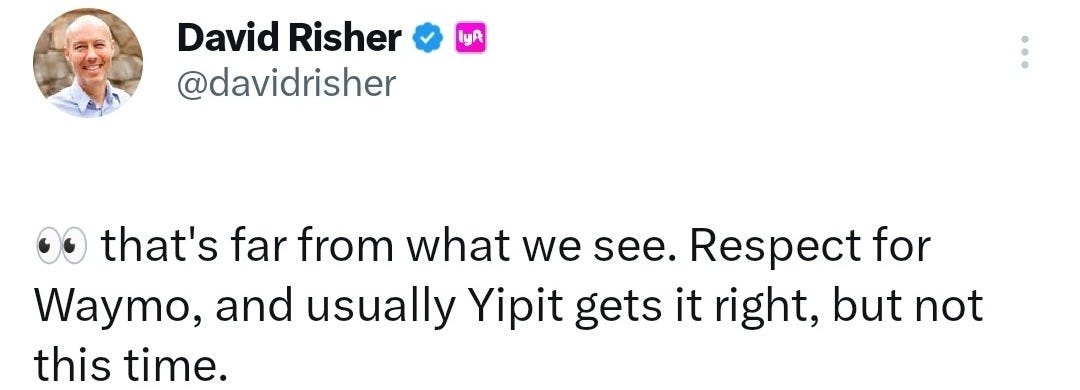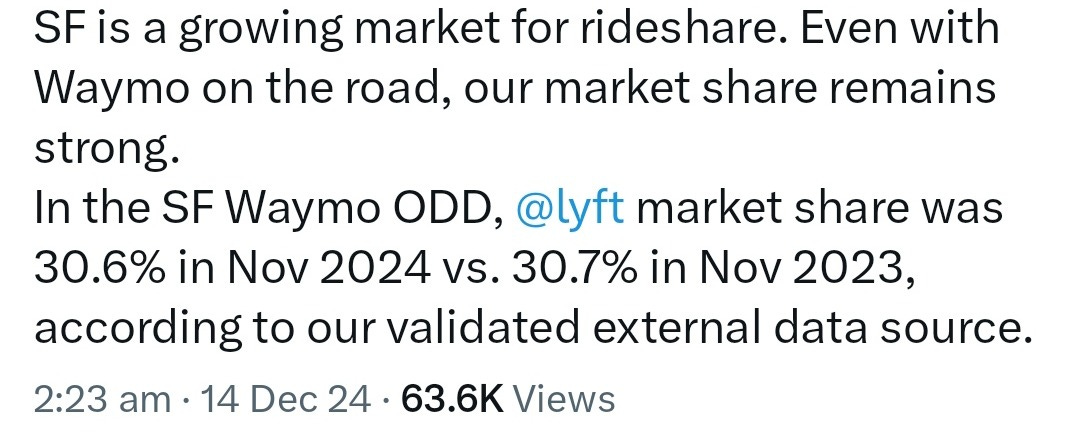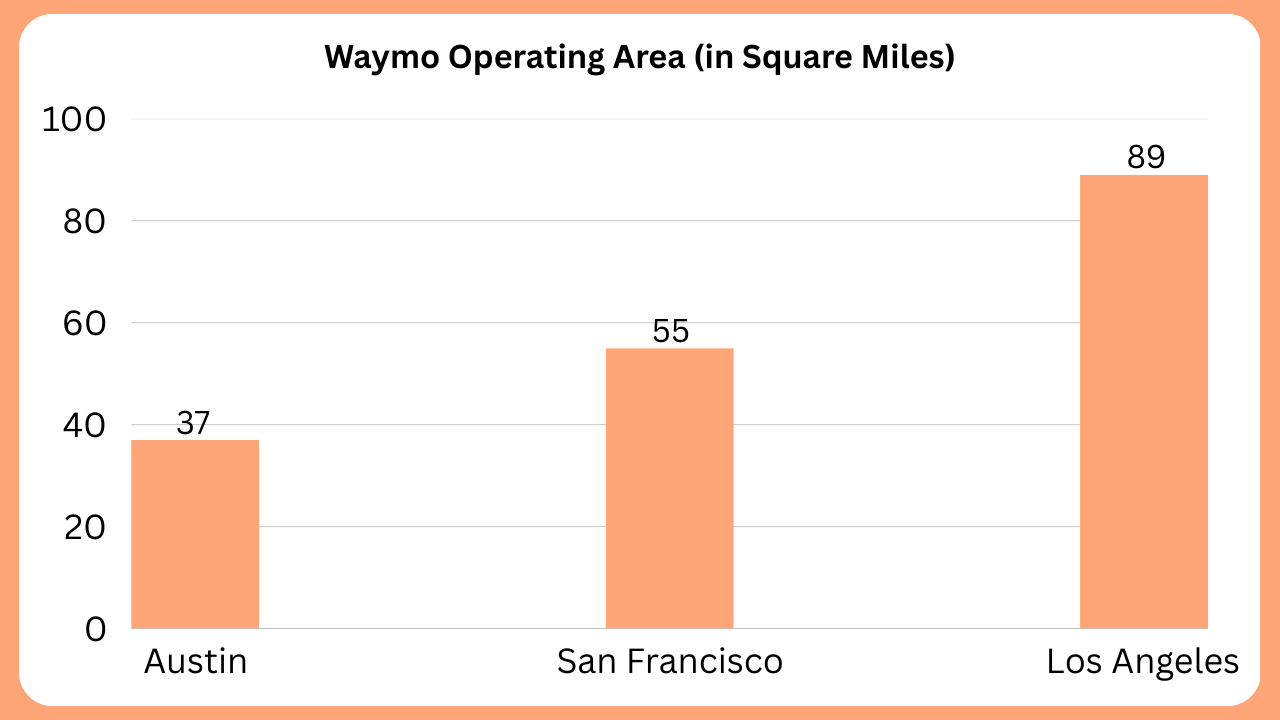Do Waymo Robotaxis Really Make Up 20% of Uber Rides in Austin?
Yipit claims that Waymo makes up 20% of Uber rides in Austin, but can we trust the data?
In Friday’s newsletter, I featured a tweet from a16z’s
that said Waymo now has 20% of Uber’s market share in Austin. Bloomberg’s followed up with a nice piece (no paywall) using the same Yipit data and shared some additional information.The analysis was based on customer email receipts collected by market analytics firm YipitData. The firm also found that Waymo, Alphabet Inc.’s autonomous vehicle unit, has racked up 80% more driverless rides in its operating zone in Austin in the first 27 days of offering service than it did in the early days of its San Francisco launch. A key difference in the rollout is that Waymo trips are exclusively available through Uber in Austin, while in San Francisco they’re available only through Waymo’s own app.
Since this story has picked up some steam since then, I wanted to share my thoughts on the veracity of this claim.
Can we trust Yipit data?
I’m not an expert on Yipit data but I’ve heard mixed reviews on the accuracy. Yipit says “its analysis represents approximations of real-world performance, rather than precise estimates, because Waymo passengers are only a subset of the more than 1 million monthly active users on its email dashboard.” 1 million MAUs sounds like a big number but this data was from a ‘subset’ of that number. So we have no idea how big the sample size is. But obviously, the bigger the better.
Let’s take a guess on our own though. As of 2023, Austin had a population of nearly 1 million, but we will generously assume it’s grown to 1.2 million since then. Divide that number by the total population of the United States (340.1 million) and you get 0.35%. Or 35,000 monthly active users, of which only some will have taken an Uber/Waymo in the past month. I think it’s telling that Yipit didn’t release the number of MAUs this data was based off of.
The last time Alex/Yipit released data saying that Waymo’s market share was equal to Lyft’s market share in Waymo’s operational domain, Lyft CEO David Risher fired back:
I’m not sure what Lyft’s ‘validated external data source’ is but David is basically saying that Yipit’s data is completely wrong. Obviously, it’s in Lyft’s best interest to say this and there’s no real way to fact check it unless Waymo, Uber and Lyft all provide their trip data (never going to happen unless forced by regulators) but it is interesting how much David pushed back on the data here. He could have said, “we’ve lost as much market share as Uber” but instead he said, our market share has actually increased since last year when Waymo launched. Mic drop.
The big missing variable from Yipit’s data
The most important thing missing from this data is the number of vehicles Waymo has on the road in Austin. Obviously if their fleet size is 1,000 vehicles, they’re going to rack up rides and market share a lot quicker than if it’s just 100 vehicles.
Waymo has historically launched new markets like Los Angeles with 1-200 vehicles so that would be my guess as to the fleet size, in which case, 20% would be impressive.
Uber has been pretty quiet about the number
This news has been great for Uber since the big difference with the Austin launch was obviously that Waymo is only available on the Uber app. So even if the actual number is lower, it’s in Uber’s best interest to stay quiet for a while. If the Yipit data is even close to the truth, I’d expect/hope them to confirm it before or during their next earnings call. After all, it is good news and a bullish sign for the case Uber is trying to make as the best source of demand for AV companies.. That would also solidify Yipit as a solid data source and make me question David Risher’s market share claims. If Uber stays mum though, I don’t think I’ll be featuring Yipit’s data much more in the future :)
So is Waymo’s market share in Austin really 20%?
I think the 20% number is plausible but if I were a betting man, I would take the under. 20% would be a HUGE number and I can’t imagine that Waymo would have flooded Austin with more than 1-200 vehicles in the first month of a brand new partnership model with Uber. Waymo is supply constrained after all on the vehicle side.
That being said, Austin is a ‘techie city’ like SF, so you have a lot of folks who want to take Waymo. ‘Waymo on Uber’ is even less frictional for customers to call a ride. And finally, I think Uber’s massive demand also helps in off peak hours when Waymos are typically not that busy. So add that all up and you have the potential for high utilization.
But the real reason why I think it isn’t 20% is because the Yipit data is limited to Waymo’s operating domain. In Austin, their operating area is 37 square miles which sounds like a lot, but in SF, it’s 55 square miles and in Los Angeles, it’s 89 square miles.
Even the Austin airport is outside of Waymo’s operating domain (physically and logistically) in Austin, and according to Alex/the Yipit data, at the full Austin metro level, Waymo accounts for just 6% of all rides. So it sounds like there are a lot of rides that are happening outside of the service area and I am guessing a lot of those may start in the service area and not be counted. Ultimately, this data is interesting but it’s up to Uber and/or Waymo to confirm the numbers. And of course, we’ll know this partnership is really working if Waymo continues to launch new markets with Uber instead of going at it alone.
Readers, what do you think about the veracity of Yipit’s data? Do you think Waymo makes up 20% of rides on Uber in Austin?
Until Friday!
-Harry







We here at UT can't enter the geofence w/o seeing a Waymo vehicle go by. Often 2 or 3 within a couple miles of driving inside their fence. UT students seem to love them to (for short rides). I'd love to see a comparison of person-miles traveled (vs simple ride count). And we would LOVE LOVE LOVE to see them sharing rides (to airport & other major destinations) asap. ;-) Thanks, Waymo!!
Great piece Harry, really enjoyed reading it!